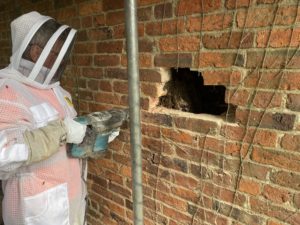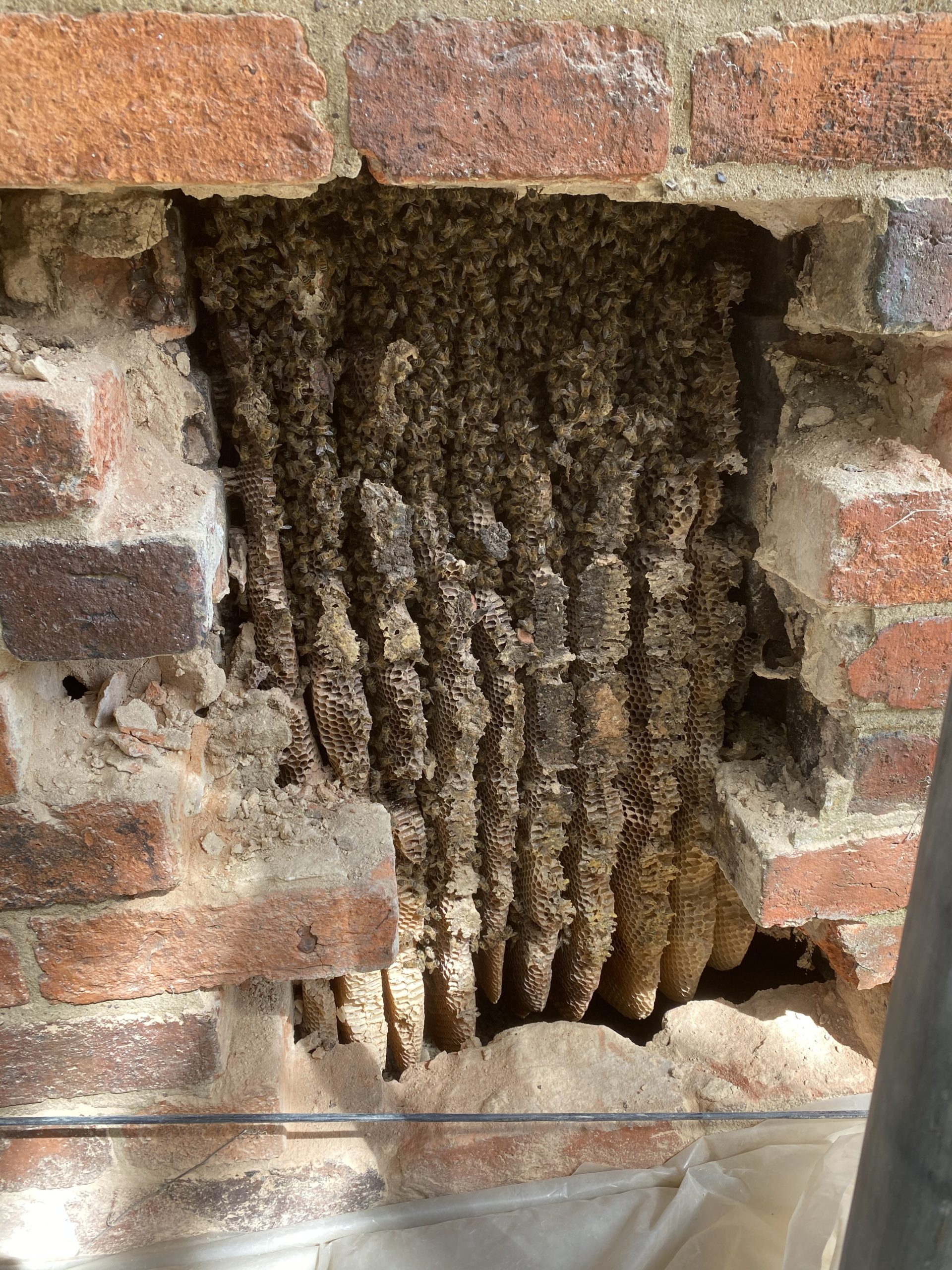
Honeybee Cut-Outs
At iX5 Pest Control we are seeing a huge increase in the number of enquiries about our honeybee removal work (sometimes known as honeybee cut-outs). In the last 3 weeks we have undertaken a number of honeybee removal jobs, including removing an established colony from the ceiling of a listed building, another colony from a chimney and one from a roof void.
When we receive a call about a resident honeybee colony there are a number of factors we consider. Each job requires a site survey to identify the exact location of the colony, assess the structure and condition of the building, and determine the least disruptive way to access and remove the colony. During the survey we use thermal imaging cameras, endoscope cameras and other specialist equipment. We also consider whether the building is Listed, and the length of time a colony has been present, as this will affect the work that can be undertaken and the potential amount of comb present. In an average chimney, an established colony will draw out around one foot (30cm approx) of comb each year!
Once a colony of bees has taken up residence in a building, cut-outs are a considerable undertaking, requiring use of specialist knowledge and equipment, and sometimes requiring use of scaffold or other access equipment. This type of work draws on knowledge of bees and bee behaviours; knowledge and understanding of building designs, building techniques and materials, and also consideration of services such as gas, water and electrics, so these are not disturbed or damaged.
For the recent removal we undertook from the chimney, the scaffold was erected on the Friday, ready for the bee removal work to start on the Monday morning. We had completed a through survey prior to this so had a clear plan of how the work would progress. However until we ‘cut-in’ it is not possible to know exactly what we are dealing with! We sheeted the internal fireplaces to reduce the risk of bees and dust or debris entering the internal rooms and then started cutting into the outside wall of the chimney in the area of the bee activity. The mortar was raked out and bricks carefully removed so they could be reused. We continued to carefully remove bricks until the full extent of the colony and comb were exposed. The removal then started. This involved using a specially designed ‘bee vacuum’ to gently remove the bees from the surface of the comb. The comb was then carefully cut out and placed into frames and the frames were then placed into the hive. The comb contained eggs, larvae and food (honey and pollen). The bees were then transferred from the vacuum into the hive. This was one full day’s work!
The following day the chimney flue was cleaned of all debris, deodorised, and the brickwork cleaned up and reinstated. As this chimney flue was a redundant one we fitted an insect-proof mesh to the top of the chimney, along with a chimney cap to prevent rain entering the flue. This all reduced the risk of another colony taking up residence! As with all work undertaken by iX5 Pest Control, the site was then cleaned thoroughly prior to departure.
Once the on-site work is complete, the bee colony need taking to their temporary new home where they are monitored closely for signs of disease before being relocated alongside other colonies in our apiary. All equipment also has to be thoroughly cleaned and sanitised ready for re-use. As you might imagine the combination of cement dust, bees wax and honey on equipment means this is no easy task! The equipment is sanitised to reduce the risk of any disease spreading between bee colonies.
As you might gather, undertaking even a relatively straightforward honeybee cut-out is a big commitment but it is extremely satisfying work removing bees and rehoming them and this is why iX5 Pest Control are continually building our reputation for this type of work.
If you require assistance or advice on honeybees or any other pest matter, please contact us here or call us on 01604 328545
iX5 Pest Control – Trusted With Results.

